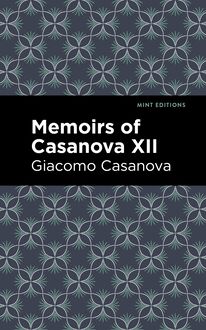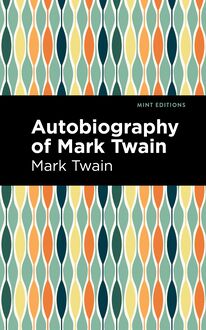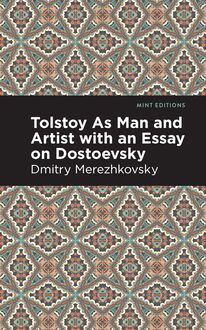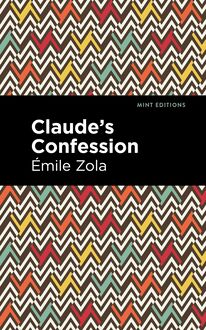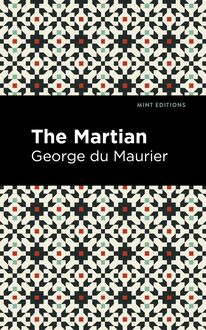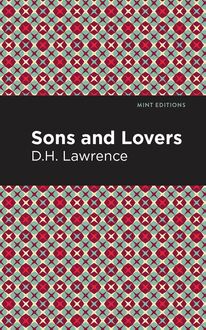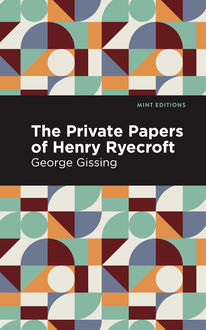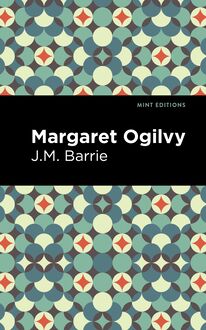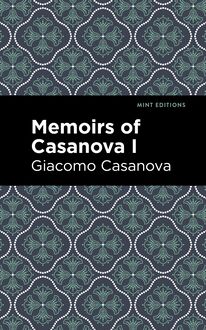-
 Univers
Univers
-
 Ebooks
Ebooks
-
 Livres audio
Livres audio
-
 Presse
Presse
-
 Podcasts
Podcasts
-
 BD
BD
-
 Documents
Documents
-
- Cours
- Révisions
- Ressources pédagogiques
- Sciences de l’éducation
- Manuels scolaires
- Langues
- Travaux de classe
- Annales de BEP
- Etudes supérieures
- Maternelle et primaire
- Fiches de lecture
- Orientation scolaire
- Méthodologie
- Corrigés de devoir
- Annales d’examens et concours
- Annales du bac
- Annales du brevet
- Rapports de stage
La lecture à portée de main
Vous pourrez modifier la taille du texte de cet ouvrage
Découvre YouScribe en t'inscrivant gratuitement
Je m'inscrisDécouvre YouScribe en t'inscrivant gratuitement
Je m'inscrisEn savoir plus
Vous pourrez modifier la taille du texte de cet ouvrage
En savoir plus

Description
Published posthumously in 1766, A Journal to Stella by Jonathan Swift is a complete collection consisting of sixty-five letters he wrote to Esther Johnson, whom he bestowed the name of Stella. It is known that Stella is the name Swift gave to Esther Johnson. They met when she was only eight years old and knew each other for the entirety of the rest of their lives. Swift was first a mentor to young Esther. He taught her to read and write then introduced her to the arts. Jonathan’s relationship to Esther is intriguing. While they shared a friendship for many years, Jonathan left her in Ireland when he moved to London for some time. In that time, he drew interest from several other women, but nothing came of those relationships. However, when a man showed interest in Esther and wished to propose, the letters disclose how Jonathan prevented this from happening. Such interference provides greater evidence for the affection he felt for Stella. There are no accounts from Stella herself, but Swift depicts her character wonderfully as a loyal, kind, and clever woman. The sixty-five letters to Stella that compose A Journal to Stella, explores Swift and Johnson’s relationship and history.
A Journal to Stella is an interesting study on the relationship between the highly esteemed classical author, Jonathan Swift and a woman who was very dear to him. Written with affection and detailed prose, the letters that are featured in A Journal to Stella also reveal insights on the culture of 18th century London and features many of the prominent men that Swift met. As he wrote of his daily routine and life, readers are allowed a privileged glimpse of how this famous author lived day to day, including the intimate details of his relationships.
Containing the wit and humor Swift is famous for, A Journal to Stella reveals the author for who he really was, allowing even modern readers to know this incredible 18th century man. This edition of Jonathan Swift’s A Journal to Stella features an eye-catching cover design and is printed in a readable font, making it both accessible and modern.
Sujets
Informations
| Publié par | Mint Editions |
| Date de parution | 15 juin 2021 |
| Nombre de lectures | 0 |
| EAN13 | 9781513275475 |
| Langue | English |
| Poids de l'ouvrage | 2 Mo |
Informations légales : prix de location à la page 0,0500€. Cette information est donnée uniquement à titre indicatif conformément à la législation en vigueur.
Extrait
A Journal to Stella
Jonathan Swift
A Journal to Stella was first published in 1766.
This edition published by Mint Editions 2020.
ISBN 9781513270296 | E-ISBN 9781513275475
Published by Mint Editions®
minteditionbooks.com
Publishing Director: Jennifer Newens
Design & Production: Rachel Lopez Metzger
Project Manager: Micaela Clark
Typesetting: Westchester Publishing Services
C ONTENTS I NTRODUCTION L ETTER I L ETTER II L ETTER III L ETTER IV L ETTER V L ETTER VI L ETTER VII L ETTER VIII L ETTER IX L ETTER X L ETTER XI L ETTER XII L ETTER XIII L ETTER XIV L ETTER XV L ETTER XVI L ETTER XVII L ETTER XVIII L ETTER XIX L ETTER XX L ETTER XXI L ETTER XXII L ETTER XXIII L ETTER XXIV L ETTER XXV L ETTER XXVI L ETTER XXVII L ETTER XXVIII L ETTER XXIX L ETTER XXX L ETTER XXXI L ETTER XXXII L ETTER XXXIII L ETTER XXXIV L ETTER XXXV L ETTER XXXVI L ETTER XXXVII L ETTER XXXVIII L ETTER XXXIX L ETTER XL L ETTER XLI L ETTER XLII L ETTER XLIII L ETTER XLIV L ETTER XLV L ETTER XLVI L ETTER XLVII L ETTER XLVIII L ETTER XLIX L ETTER L L ETTER LI L ETTER LII L ETTER LIII L ETTER LIV L ETTER LV L ETTER LVI L ETTER LVII L ETTER LVIII L ETTER LIX L ETTER LX L ETTER LXI L ETTER LXII L ETTER LXIII L ETTER LXIV L ETTER LXV
I NTRODUCTION
When Swift began to write the letters known as the Journal to Stella , he was forty-two years of age, and Esther Johnson twenty-nine. Perhaps the most useful introduction to the correspondence will be a brief setting forth of what is known of their friendship from Stella’s childhood, the more specially as the question has been obscured by many assertions and theories resting on a very slender basis of fact.
Jonathan Swift, born in 1667 after his father’s death, was educated by his uncle Godwin, and after a not very successful career at Trinity College, Dublin, went to stay with his mother, Abigail Erick, at Leicester. Mrs. Swift feared that her son would fall in love with a girl named Betty Jones, but, as Swift told a friend, he had had experience enough “not to think of marriage till I settle my fortune in the world, which I am sure will not be in some years; and even then, I am so hard to please that I suppose I shall put it off to the other world.” Soon afterwards an opening for Swift presented itself. Sir William Temple, now living in retirement at Moor Park, near Farnham, had been, like his father, Master of the Irish Rolls, and had thus become acquainted with Swift’s uncle Godwin. Moreover, Lady Temple was related to Mrs. Swift, as Lord Orrery tells us. Thanks to these facts, the application to Sir William Temple was successful, and Swift went to live at Moor Park before the end of 1689. There he read to Temple, wrote for him, and kept his accounts, and growing into confidence with his employer, “was often trusted with matters of great importance.” The story—afterwards improved upon by Lord Macaulay—that Swift received only £20 and his board, and was not allowed to sit at table with his master, is wholly untrustworthy. Within three years of their first intercourse, Temple had introduced his secretary to William the Third, and sent him to London to urge the King to consent to a bill for triennial Parliaments.
When Swift took up his residence at Moor Park he found there a little girl of eight, daughter of a merchant named Edward Johnson, who had died young. Swift says that Esther Johnson was born on March 18, 1681; in the parish register of Richmond, which shows that she was baptized on March 20, 1680–81, her name is given as Hester; but she signed her will “Esther,” the name by which she was always known. Swift says, “Her father was a younger brother of a good family in Nottinghamshire, her mother of a lower degree; and indeed she had little to boast in her birth.” Mrs. Johnson had two children, Esther and Ann, and lived at Moor Park as companion to Lady Giffard, Temple’s widowed sister. Another member of the household, afterwards to be Esther’s constant companion, was Rebecca Dingley, a relative of the Temple family. She was a year or two older than Swift.
The lonely young man of twenty-two was both playfellow and teacher of the delicate child of eight. How he taught her to write has been charmingly brought before us in the painting exhibited by Miss Dicksee at the Royal Academy a few years ago; he advised her what books to read, and instructed her, as he says, “in the principles of honour and virtue, from which she never swerved in any one action or moment of her life.”
By 1694 Swift had grown tired of his position, and finding that Temple, who valued his services, was slow in finding him preferment, he left Moor Park in order to carry out his resolve to go into the Church. He was ordained, and obtained the prebend of Kilroot, near Belfast, where he carried on a flirtation with a Miss Waring, whom he called Varina. But in May 1696 Temple made proposals which induced Swift to return to Moor Park, where he was employed in preparing Temple’s memoirs and correspondence for publication, and in supporting the side taken by Temple in the Letters of Phalaris controversy by writing The Battle of the Books , which was, however, not published until 1704. On his return to Temple’s house, Swift found his old playmate grown from a sickly child into a girl of fifteen, in perfect health. She came, he says, to be “looked upon as one of the most beautiful, graceful, and agreeable young women in London, only a little too fat. Her hair was blacker than a raven, and every feature of her face in perfection.”
On his death in January 1699, Temple left a will, dated 1694, directing the payment of £20 each, with half a year’s wages, to Bridget Johnson “and all my other servants”; and leaving a lease of some land in Monistown, County Wicklow, to Esther Johnson, “servant to my sister Giffard.” By a codicil of February 1698, Temple left £100 to “Mr. Jonathan Swift, now living with me.” It may be added that by her will of 1722, proved in the following year, Lady Giffard gave £20 to Mrs. Moss—Mrs. Bridget Johnson, who had married Richard Mose or Moss, Lady Giffard’s steward. The will proceeds: “To Mrs. Hester ( sic ) Johnson I give £10, with the £100 I put into the Exchequer for her life and my own, and declare the £100 to be hers which I am told is there in my name upon the survivorship, and for which she has constantly sent over her certificate and received the interest. I give her besides my two little silver candlesticks.”
Temple left in Swift’s hands the task of publishing his posthumous works, a duty which afterwards led to a quarrel with Lady Giffard and other members of the family. Many years later Swift told Lord Palmerston that he stopped at Moor Park solely for the benefit of Temple’s conversation and advice, and the opportunity of pursuing his studies. At Temple’s death he was “as far to seek as ever.” In the summer of 1699, however, he was offered and accepted the post of secretary and chaplain to the Earl of Berkeley, one of the Lords Justices, but when he reached Ireland he found that the secretaryship had been given to another. He soon, however, obtained the living of Laracor, Agher, and Rathbeggan, and the prebend of Dunlavin in St. Patrick’s Cathedral, Dublin. The total value of these preferments was about £230 a year, an income which Miss Waring seems to have thought enough to justify him in marrying. Swift’s reply to the lady whom he had “singled out at first from the rest of women” could only have been written with the intention of breaking off the connection, and accordingly we hear no more of poor Varina.
At Laracor, a mile or two from Trim, and twenty miles from Dublin, Swift ministered to a congregation of about fifteen persons, and had abundant leisure for cultivating his garden, making a canal (after the Dutch fashion of Moor Park), planting willows, and rebuilding the vicarage. As chaplain to Lord Berkeley, he spent much of his time in Dublin. He was on intimate terms with Lady Berkeley and her daughters, one of whom is best known by her married name of Lady Betty Germaine; and through them he had access to the fashionable society of Dublin. When Lord Berkeley returned to England in April 1701, Swift, after taking his Doctor’s degree at Dublin, went with him, and soon afterwards published, anonymously, a political pamphlet, A Discourse on the Contests and Dissentions in Athens and Rome . When he returned to Ireland in September he was accompanied by Stella—to give Esther Johnson the name by which she is best known—and her friend Mrs. Dingley. Stella’s fortune was about £1500, and the property Temple had left her was in County Wicklow. Swift, very much for his “own satisfaction, who had few friends or acquaintance in Ireland,” persuaded Stella—now twenty years old—that living was cheaper there than in England, and that a better return was obtainable on money. The ladies took his advice, and made Ireland their home. At first they felt themselves strangers in Dublin; “the adventure looked so like a frolic,” Swift says, “the censure held for some time as if there were a secret history in such a removal: which however soon blew off by her excellent conduct.” Swift took every step that was possible to avoid scandal. When he was away, the ladies occupied his rooms; when he returned, they went into their own lodgings. When he was absent, they often stopped at the vicarage at Laracor, but if he were there, they moved to Trim, where they visited the vicar, Dr. Raymond, or lived in lodgings in the town or neighbourhood. Swift was never with Stella except in the presence of a third person, and in 1726 he said that he had not seen her in a morning “these dozen years, except once or twice in a journey.”
During a visit to England in the winter of 1703–4 we find Swift in corresponde
-
 Univers
Univers
-
 Ebooks
Ebooks
-
 Livres audio
Livres audio
-
 Presse
Presse
-
 Podcasts
Podcasts
-
 BD
BD
-
 Documents
Documents
-
Jeunesse
-
Littérature
-
Ressources professionnelles
-
Santé et bien-être
-
Savoirs
-
Education
-
Loisirs et hobbies
-
Art, musique et cinéma
-
Actualité et débat de société
-
Jeunesse
-
Littérature
-
Ressources professionnelles
-
Santé et bien-être
-
Savoirs
-
Education
-
Loisirs et hobbies
-
Art, musique et cinéma
-
Actualité et débat de société
-
Actualités
-
Lifestyle
-
Presse jeunesse
-
Presse professionnelle
-
Pratique
-
Presse sportive
-
Presse internationale
-
Culture & Médias
-
Action et Aventures
-
Science-fiction et Fantasy
-
Société
-
Jeunesse
-
Littérature
-
Ressources professionnelles
-
Santé et bien-être
-
Savoirs
-
Education
-
Loisirs et hobbies
-
Art, musique et cinéma
-
Actualité et débat de société
- Cours
- Révisions
- Ressources pédagogiques
- Sciences de l’éducation
- Manuels scolaires
- Langues
- Travaux de classe
- Annales de BEP
- Etudes supérieures
- Maternelle et primaire
- Fiches de lecture
- Orientation scolaire
- Méthodologie
- Corrigés de devoir
- Annales d’examens et concours
- Annales du bac
- Annales du brevet
- Rapports de stage


